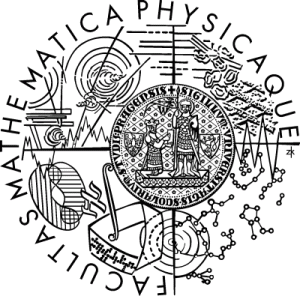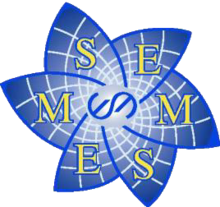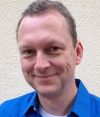
photos

flyer

program



Last update:
09.06.2016
|
Program
The lectures will be prepared with a broad multidisciplinary audience in mind,
and at each school a broad scope, ranging from modeling to scientific computing,
will be covered. The four main speakers will deliver a series of three
70-minutes lectures. Ample time within the school is allocated for the promotion of
informal scientific discussions among the participants.
The detailed program is available in pdf

Plenary speakers
 |
Peter Bastian
Universität Heidelberg, Germany
Interdisziplinäres Zentrum für Wissenschaftliches Rechnen (IWR)
Im Neuenheimer Feld 368
D-69120 Heidelberg |
|
| Simulation of Multiphase Flows in Porous Media |
|
Flows in porous media have important applications such as geothermal
energy production, enhanced oil recovery or sequestration of CO2. In
this series of three lectures we review the most important models
ranging from groundwater flow and transport to compositional
multiphase flows, then discuss accurate discretization methods, in
particular discontinuous Galerkin schemes, and solution strategies
such as fully-coupled and operator splitting methods as well as
solvers for the subproblems including algebraic multigrid. The last
lecture will put emphasis on high-performance computing aspects, in
particular the implementation of higher-order discontinuous Galerkin
methods.
|
 |
Jörg Liesen
Technische Universität Berlin, Germany
Institut für Mathematik
Sekretariat MA 4-5
Straße des 17. Juni 136
D-10623 Berlin |
|
| Krylov subspaces. Classical mathematics, iterative methods, and surprising links |
|
Krylov subspaces form the basis of many modern numerical methods for computing
matrix decompostions, for solving linear algebraic systems and
eigenvalue problems, or for computing matrix functions. They occur in applications
throughout science and engineering. This is not by accident, but due to the fundamental nature
of the mathematical ideas that are encoded in these spaces. In fact, Krylov subspaces are
closely linked with classical concepts associated with matrices and linear operators,
including invariant subspaces, the minimal polynomial, or the Jordan decomposition. For the
practical application of Krylov subspaces it is essential to generate well conditioned bases at
a low cost. The analysis of this important challenge again involves
classical mathematical topics, for example the structure of orthogonalization processes or the
normality of operators.
This course will explore the mathematical theory of Krylov subspaces. While discussing
the classical mathematics associated with these spaces, we will discover
some surprising links to other areas of science.
|
 |
Jan Mandel
University of Colorado Denver, USA
Department of Mathematical and Statistical Sciences
Campus Box 170
Denver, CO 80217-336 |
|
| Probability on spaces of functions, with applications to inverse problems and data assimilation |
|
Probability measures on Hilbert spaces provide a natural setting for random fields,
understood as smooth random functions. Functions with varying degrees of
smoothness arise as solutions of partial differential equations. Topics include the
mean of Hilbert space-valued random elements as a weak integral, random elements
with finite second moments, covariance, trace class operators, smoothness
properties of random functions, Gaussian measures, Karhunen-Loeve expansion,
and white noise distribution. The infinitely dimensional setting is useful as a limit
case of high-dimensional problems, arising, e.g., when meshes in numerical models
are refined, and it is at the foundation of the field of uncertainty quantification.
Applications include Bayesian approach to inverse problems with infinitely
dimensional data and assimilation of active fires detection from satellites into a fire
spread model.
|
 |
Richard Katz
University of Oxford, UK
Department of Earth Sciences,
South Parks Road,
Oxford OX1 3AN |
|
| Two-phase fluid dynamics of partially molten rock: fundamentals and application to the Earth
|
|
Over geological time, the solid mantle of the Earth behaves as a creeping
fluid, undergoing a thermochemical convection that has plate tectonics as
a surface expression. The mantle is modelled as an incompressible fluid
with a very high viscosity. Volcanism is another surface expression of
mantle convection: the liquid magma is derived from partial melting of the
convecting mantle. Magma that forms by partial melting migrates through
the interconnected pore-spaces between mantle grains. Hence the
magma/mantle system is a two-phase flow: both the low-viscosity magma and
the high-viscosity mantle can be modelled as low-Reynolds number flows.
Since the late 1970s, a mathematical theory of two-phase flow been
developed and extensively studied, both analytically and numerically. In
this series of three lectures, I review the theory and provide some
examples of its applications.
Lecture 1: foundations. Discussion of the physics of mantle convection,
melting, and melt transport. Derivation of the mechanical governing
equations from conservation of mass and momentum. Non-dimensionalisation
and analysis of emergent length-scale.
Lecture 2: fundamentals. Simple solutions for two-phase flow at plate
tectonic boundaries. Fluid-dynamical instabilities in the magma/mantle
system: mechanical porosity-banding instabilities; reactive channelisation
instabilities.
Lecture 3: applications. Thermo-chemistry of mantle melting. Melt
production at mid-ocean ridges. Consequences of mantle heterogeneity.
Consequences of grain-size variation.
|
|















